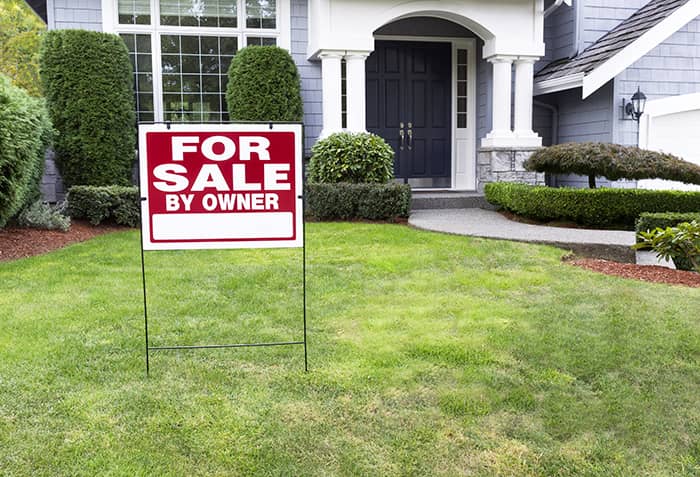Those who’re successful house flippers, regardless of how many you’re able to turn each year, maybe missing the boat. Here’s what I mean. On one hand, if all you do in real estate is flip, the light at the end of your tunnel — as it relates to retirement — is a freight train coming at full speed. Flipping is a job, nothing more, nothing less. Here’s the good news. It has the potential to give you a lifestyle you never thought possible. I’ve personally seen many who’ve worked their way up to 2-6 flips a month — a few who’ve managed to do much more. The bad news? See the good news.
Meet Joe, the 54-Year-Old Flipping Pro
He started flipping homes and smallish multi-families when he was 38. At 40 he quit his $80,000 a year job to become a full-timer. By 42, he was closing a flip a month, give or take. His typical profit — after tax — was $15-20,000 a deal. He sold his home at 44, buying in a far better neighborhood for twice what he sold his. His business was rocking and rolling. He was closing more deals and making more money than he’d ever thought possible. His wife was ecstatic, to say the least. And that was before he gave her a brand new Lexus sedan that Christmas. He’s since added a 600 square foot family/game room over their three-car garage. Since his business was growing in leaps n bounds, he clearly needed a new dually pickup. Doesn’t everyone? OK, he probably could use the pickup.

Earnings and Profits
But at 54, Joe wakes up one morning slammed by two realities. 1. He’s just plain tired. He’s been tired for a few years now, even though he hasn’t been on the job as ‘one of the guys for a while. It’s a grind and the grind’s winning. 2. Tired or not, what happens if he stops? He has all the goodies, but they’re all in the ‘now’ category on the spreadsheet. Retirement? Based on what, exactly?
At 44 years old he’d earned $500,000 in profits. Since then he’s pretty much averaged three flips monthly with after-tax profits of around $60,000. Yeah, he’s gotten better at it. After his initial flurry of lifestyle spending, he’s managed to save around $300,000 for the family nest egg. Though his friends and family are appropriately dazzled by his success, Joe knows that a retirement commensurate with his business success simply isn’t in the cards, if he continues down the same road.
Business, Investing, and Flipping
What if 10 years ago when he was two years into full-time flipping’ and his business had grown, he’d invested in three super well located 2-4 unit properties that were either new or close enough for jazz? Let’s say he paid $265,000 a piece or so with 25% down.
- What if he took $6,000 a month of his after-tax profits — just 10% — to strategically target his long-term investment debt?
- What if he added the investment properties’ total cash flow each month to the loan payoff strategy as well?
- If he chose to pay them off one at a time, instead of with equal velocity?
- What if he’d put in place, at time of acquisition, a depreciation strategy that would put his annual tax shelter on steroids — even though his personal income level would literally bar him from using it to shelter his personal income?
- What if he did all these things utilizing the principle of Strategic Synergism?
Step-by-Step
Note: There are two pivotal assumptions at work in this example. The properties will never ever increase in value, not a penny. No appreciation. Also, the NOI (net operating income) will never go up for as long as Joe owns them.
Step #1
He’s adding the aforementioned $6,000 monthly to just one of his loans. This results in the loan being paid off in approximately 22-28 months, depending upon the cash flow. (That’d be the cash flow from all three props.)
Step #2
He opted for the Cost Segregation approach to depreciation for at least one of the properties. What this does is compress the timeline of available depreciation, while increasing the annual depreciation available each year. In this scenario, we know that for about five years the annual depreciation using CS will result in around $25,000 a year in depreciation per property.
Step #3
When the first property is paid off, Joe then sells it. Since we assumed no appreciation whatsoever, that means his net proceeds will be about $257,000. His cost of sale was roughly 8% plus a bit. It took Joe 25 months to pay the loan off. He now has over a quarter million in tax-free dollars to do with as he chooses.
Note: At this point in the plan, it’s imperative to recognize that in no way, shape, or form could we possibly know what would be the highest and best use for this money. For the sake of this example, we’ll assume the market tells us that the acquisition of three more properties makes the best sense. In reality? My crystal ball is as cracked as yours.
Step #4
Joe takes the tax-free proceeds (made possible by the accumulated, unused depreciation over time) adds $40,000 to it, and purchases four more smallish properties, similar to the ones he first acquired. Subtracting the one he sold, he now owns half a dozen small rental properties.
Step #5
He’s not quite 47 years old. He’s kicking’ butt ‘n taking’ names on the flipping side of his ledger. At this point, his decision might be to continue the $6,000 a month he’s targeted for loan payoffs. Or, increase that amount to hasten a completely free ‘n clear portfolio. Or, begin diverting his now peaking after-tax flipping profits toward the purchase of more income property. Let’s say Joe opts for keeping’ the six properties and moving on from there.
Step #6
He increases his monthly contribution to $8,000 monthly. This obviously speeds up the process. Why does he do this? Because he can.
Step #7
All loans are paid off. Since his Plan called for ‘vanilla, boring’ depreciation on his last six properties — no cost segregation — a large minority percentage of his cash flow is tax-sheltered — approximately 30-50%. This will continue for at least another 15-17 years. Sweet.
Cash Flow
His retirement income at this point has risen to $110-120,000 annually. For about 15 years, maybe a couple of years more, only 50-70% of that cash flow will be subject to taxation. Joe will have paid off his primary residence. His business? Close it down, pass it on, sell it, keep it but hire executive help. His choice. His loan-free properties are worth a few Happy Meals less than $1.6 million. He’s somewhere between 54 and 58 years old. No house payment. Kids are long gone. A few hundred grand in the bank. $9-10,000 coming in monthly.







